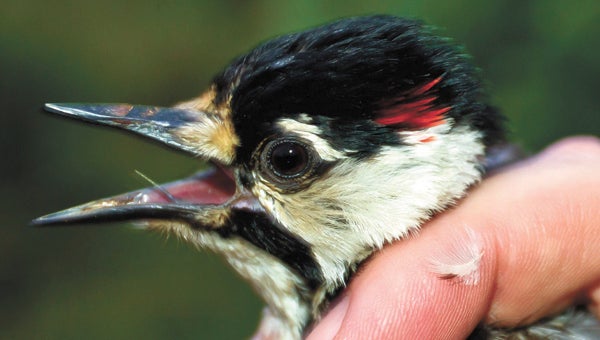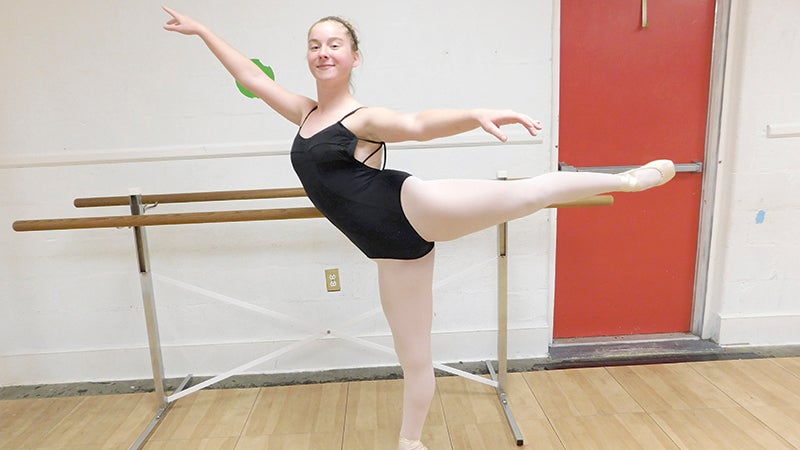Under cover of night
Published 10:06 pm Thursday, October 29, 2015

A wildlife biologist holds a male red-cockaded woodpecker during a transfer operation that involved moving four pairs from locations in North and South Carolina to the Great Dismal Swamp National Wildlife Refuge. (Bryan Watts photo)
Woodpeckers settled in new Swamp homes
By Joseph McClain
College of William & Mary
It was a stealth operation. A group of highly trained specialists infiltrated the area at dark, quietly deploying a range of technical apparatus to neutralize and secure eight carefully selected individuals, then whisking their captives miles away to a set of safe houses.
The first phase of Operation Woodpecker went off without a hitch, but it’s too early to call it a success.
Bryan Watts explained that the point of the exercise is to establish a breeding population of red-cockaded woodpeckers within the Great Dismal Swamp National Wildlife Refuge.
It would be the second population of the endangered birds in Virginia. A closely watched group of the birds has been doing well in the Piney Grove preserve in Sussex County.
Watts is the director of the Center for Conservation Biology, which collaborated in the operation with the U.S. Fish and Wildlife Service, The Nature Conservancy, Virginia Department of Game and Inland Fisheries, North Carolina Department of Transportation and J. Carter and Associates.

Red-cockaded woodpecker chicks at the Piney Grove preserve in Sussex County. It was the only other population of the bird in Virginia until last week’s transfer operation. (Bryan Watts photo)
Biologists captured four male and four female birds from healthy populations in the Carolina Sandhills National Wildlife Refuge in South Carolina and in the Palmetto-Peartree Preserve in North Carolina.
The collaborators identified individual birds for the translocation, selecting birds that had hatched this year and therefore would disperse this fall.
The birds were caught in the evening of Oct. 22, just after they entered their nesting cavity for the night. Birds were captured using telescopic net poles that cover the cavity entrance.
The boxed woodpeckers were driven overnight to their new home in the Great Dismal, where 32 artificial cavities had been installed in trees there. Each bird was placed in a new home, and the cavity opening was covered with a screen.
“At dawn, we pulled the screens off and let the birds disperse,” Watts said.
The relocation technique for these birds is not new. The CCB used essentially the same process in the early 2000s to boost the woodpecker population in the Piney Grove habitat.
Watts explained that before their habitat was lost to clearing and logging, red cockaded woodpeckers were fairly plentiful — but probably not common — south of the James. Virginia is at the northern fringe of the species’ range, and until the relocation, Piney Grove had Virginia’s only breeding population of red-cockaded woodpeckers. The birds are doing well in their Sussex County home, Watts said.
“But they are all in one place,” he added. “That makes them vulnerable to catastrophic impacts like a hurricane, which could flatten Piney Grove. And that would be that.”
The translocation was a major undertaking, with a slate of logistics that wouldn’t be unfamiliar to Seal Team Six. Watts explained that the red cockaded woodpecker is a species that needs a number of special conditions to thrive. In the first place, he said, the birds are cavity nesters and quite selective about the trees they choose.
“This species requires live pine, and older-age live pine,” he said. When it comes to nest, they have a preference for a pine that’s 80 years old or more. Watts explained that the woodpeckers are the only bird in North America that excavates cavities in live pine trees.
“It’s a very unusual strategy,” he said. “The birds choose trees that are infected with red heart disease, which softens the heartwood of the tree.”
It takes a red-cockaded woodpecker months to hammer out a home, Watts explained, so the group prepared the Great Dismal site for woodpeckers by constructing artificial cavity boxes that were fitted into the trunks of appropriate trees. A total of 32 cavities were prepared for the eight birds. Watts said the cavities were separated into eight separate neighborhoods, or “recruitment clusters,” to accommodate woodpecker lifestyle preferences.
“When these birds are released, they may settle within that cluster or they may leave altogether or they may mix up,” he explained. “So we don’t know who is going to like whom and what areas they’re going to like.”
The birds also have a complex social structure and are one of the few North American bird species that are cooperative breeders: Young birds often help to raise the new chicks.
“This behavior evolves in species with very restricted habitat,” Watts explained.” When the young reach a certain age, there’s often no place to go, because the habitat is bottled up.”
Other birds with similar parenting behavior include brown-headed nuthatch, purple gallinule and the Harris hawk.
Wilson said that when it comes to forage, the red cockaded woodpeckers are known as “ant specialists,” especially when young. They move up to wood roaches as adults. In winter, when the bugs are scarce, the birds get by on pine nuts. Their eating habits also affect habitat preferences, he said.
Watts explained that the establishment of a second population of Virginia’s red-cockaded woodpeckers has been a goal of several conservation groups for a decade. But, he said, the yardstick of the success of Operation Woodpecker will be in the reproduction.
“It’s a milestone,” Watts said. “But we need to keep in mind the distinction between introducing birds, like we did last week, versus birds establishing a population, which we won’t know until we see breeding in the spring.”





